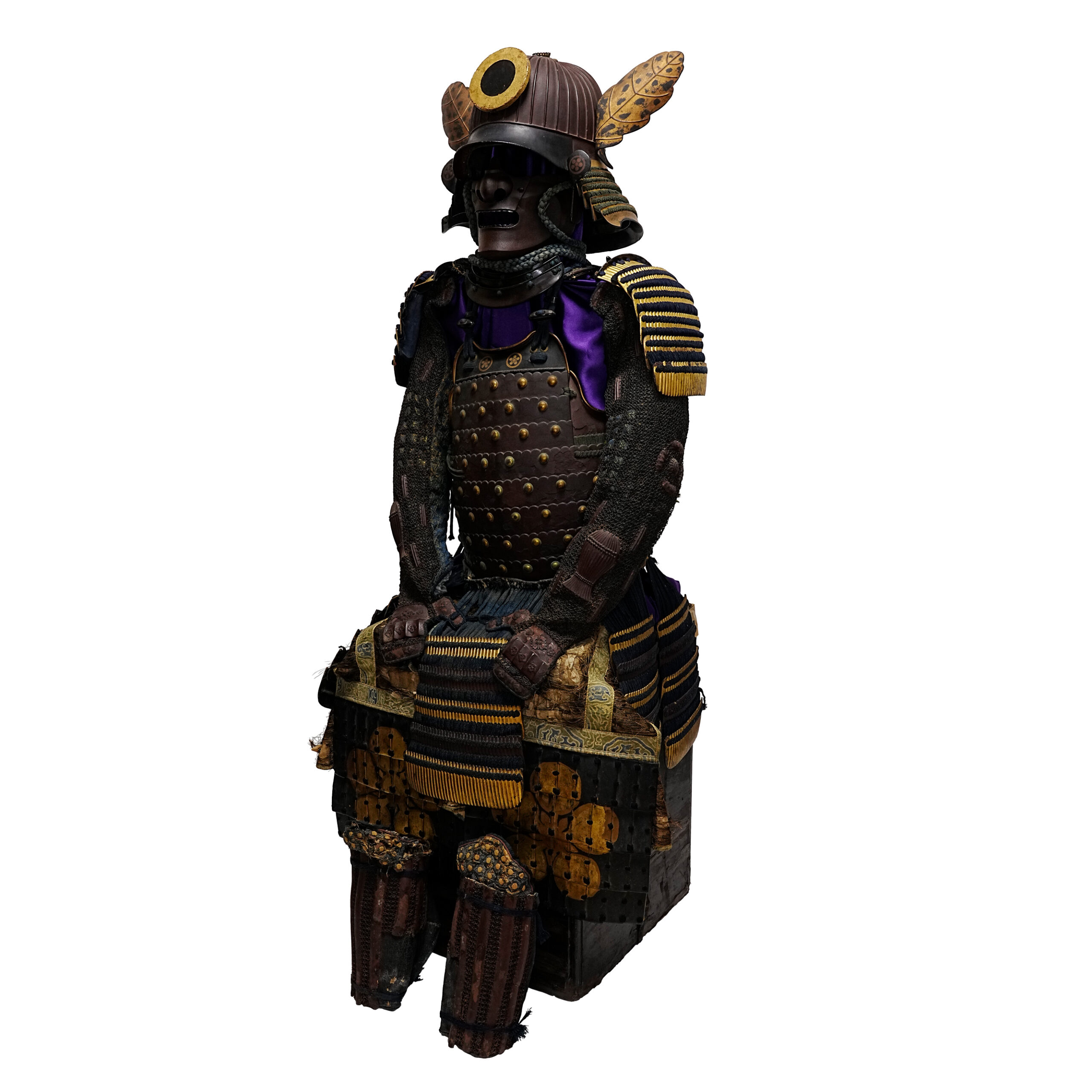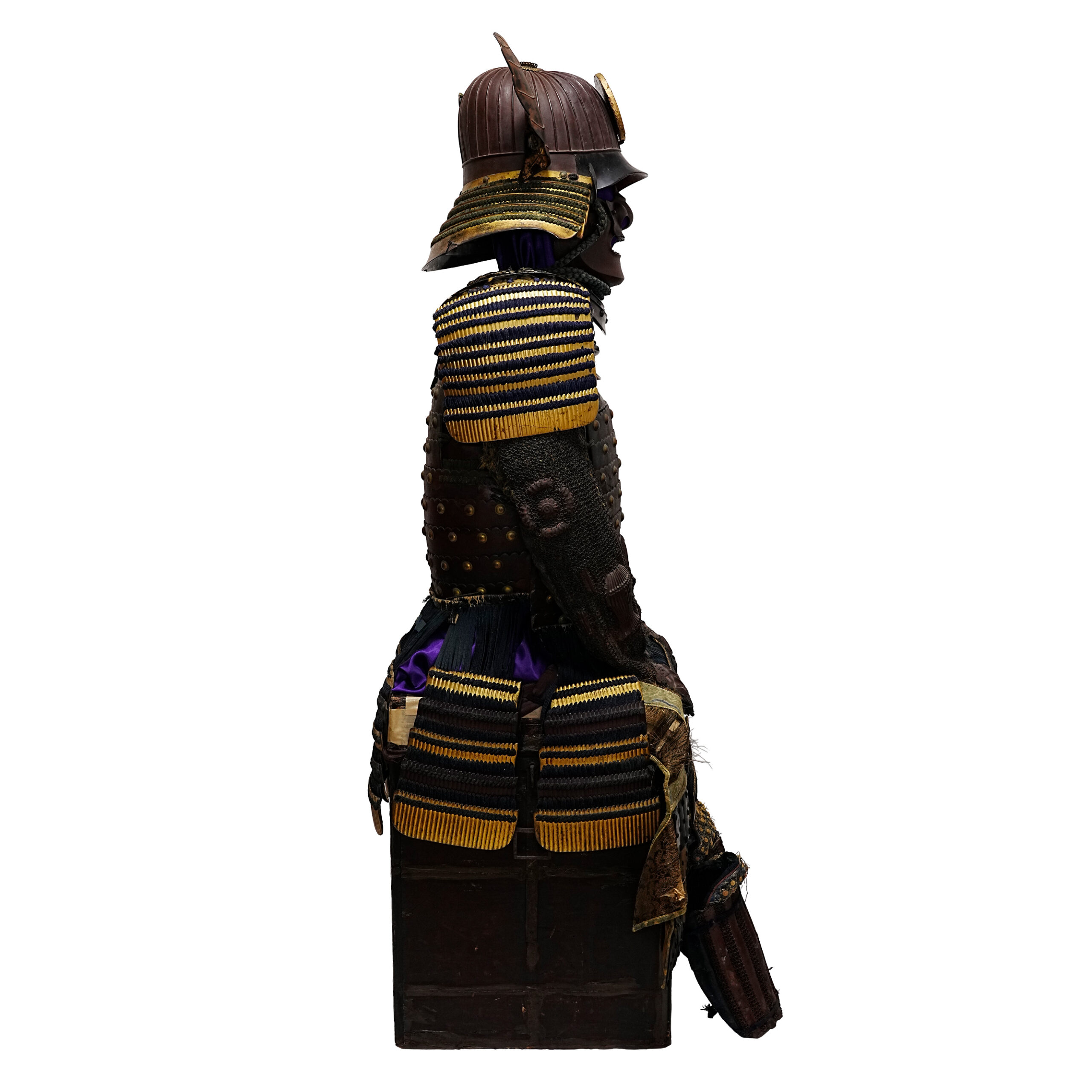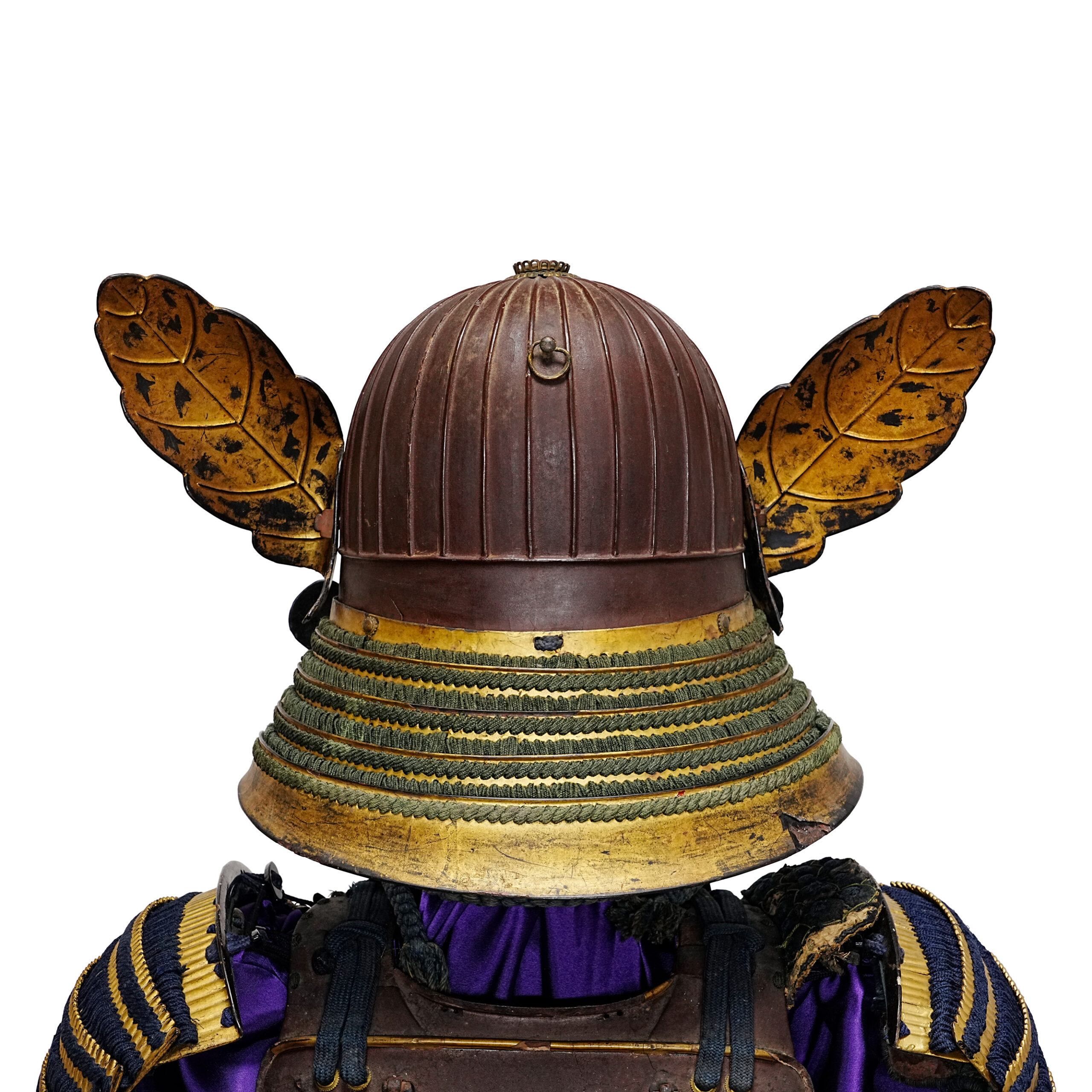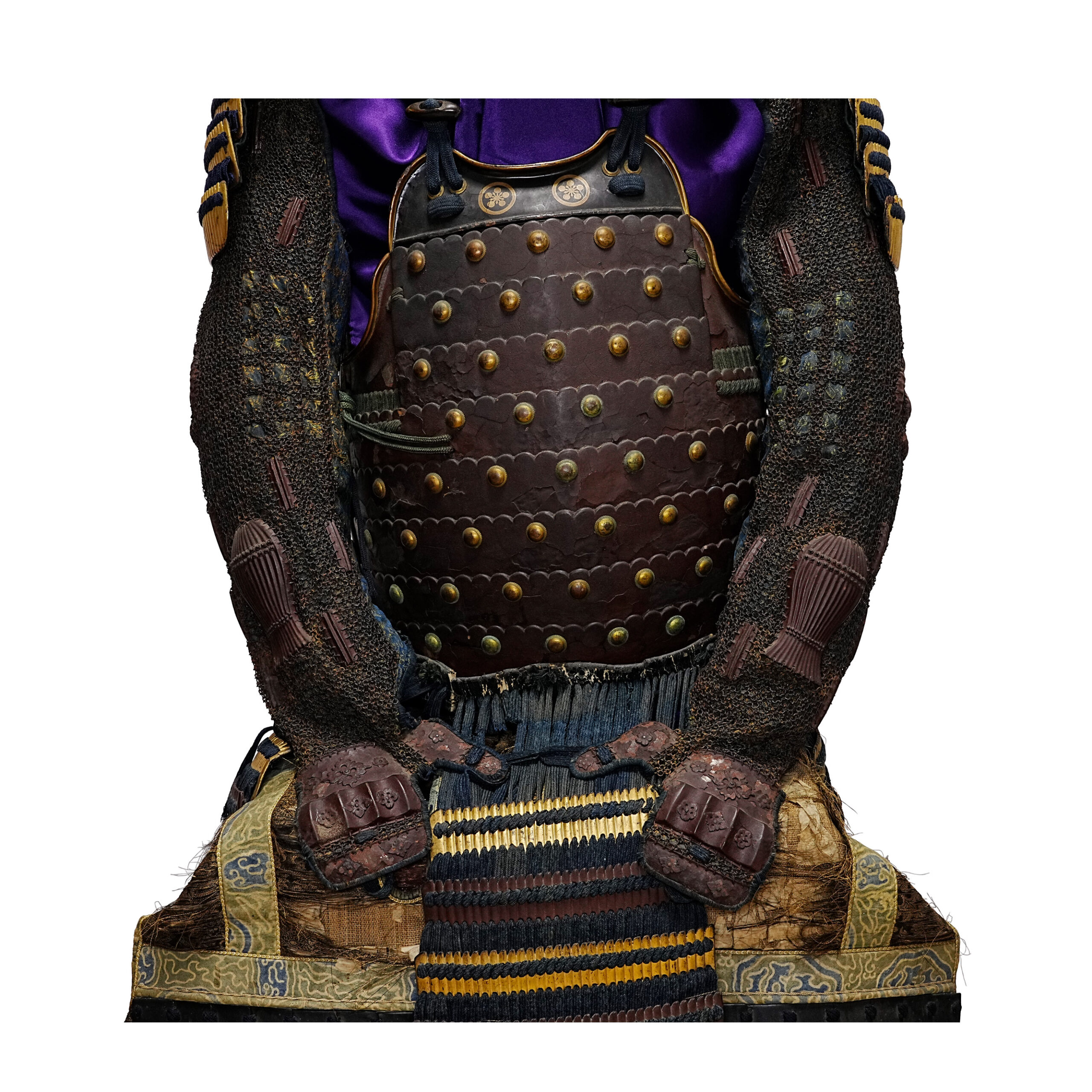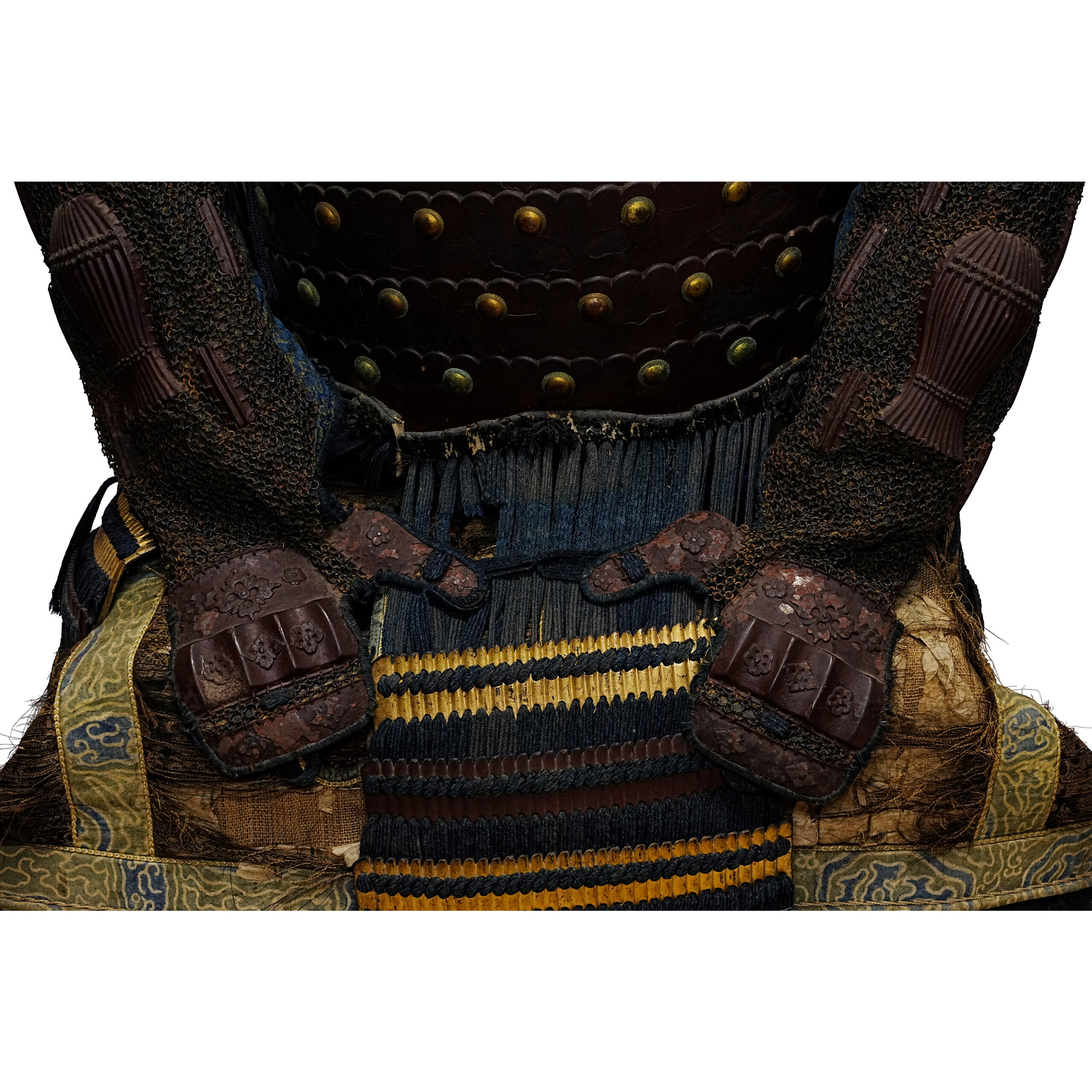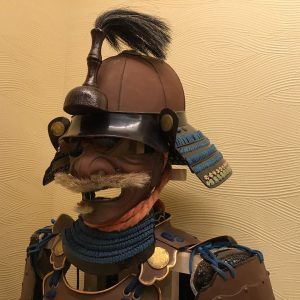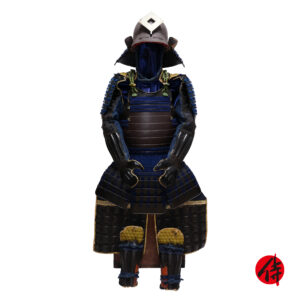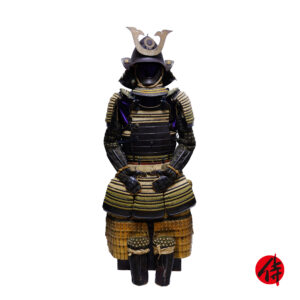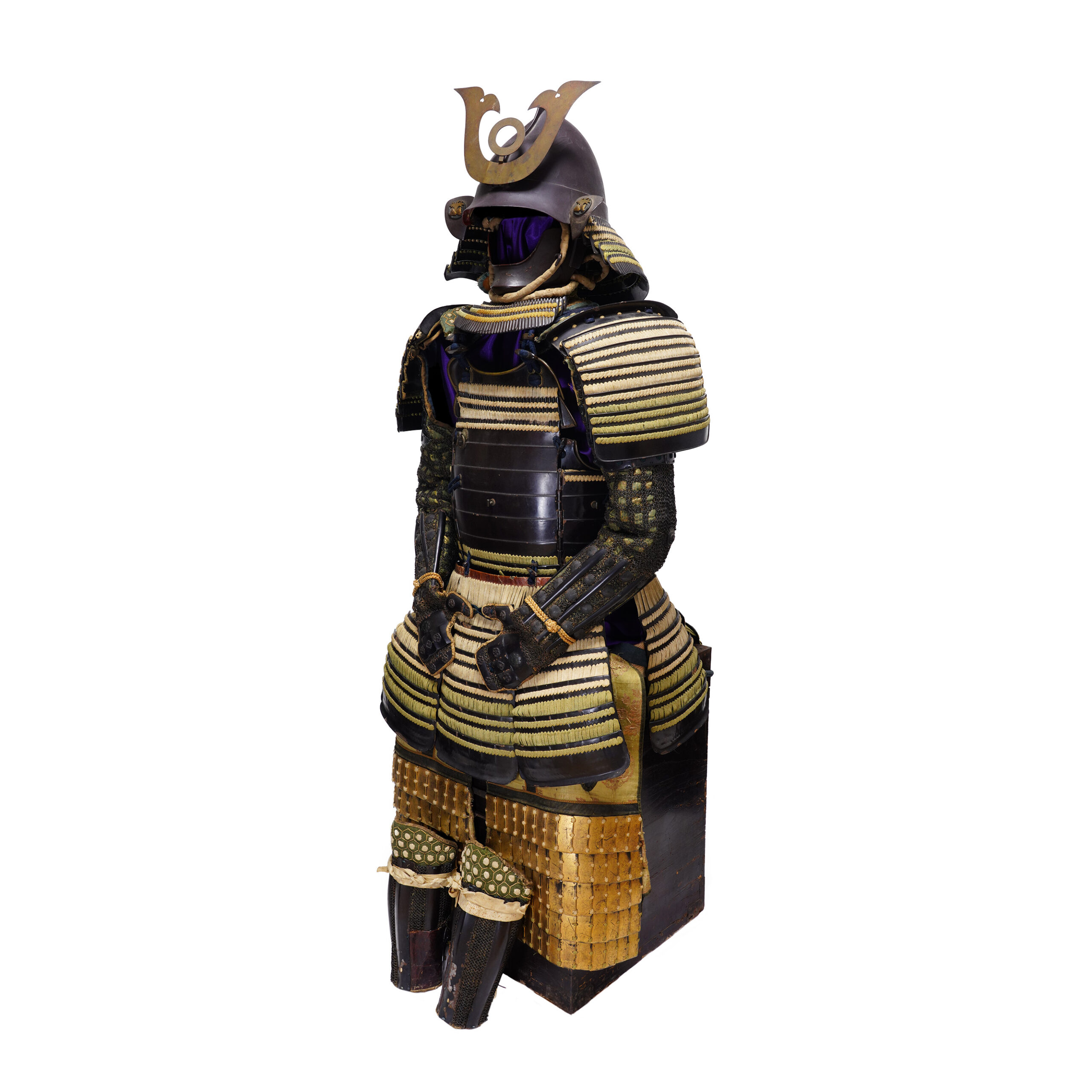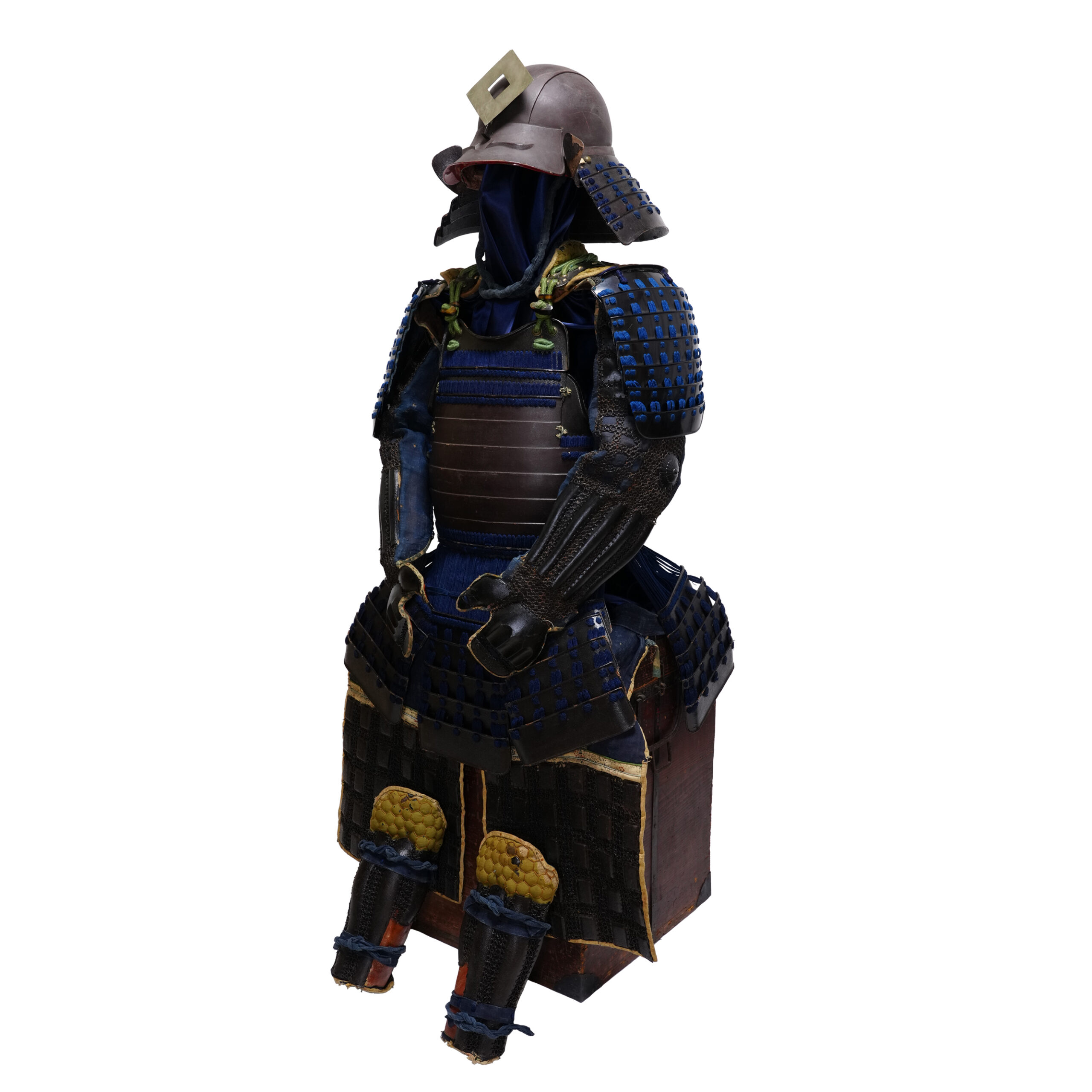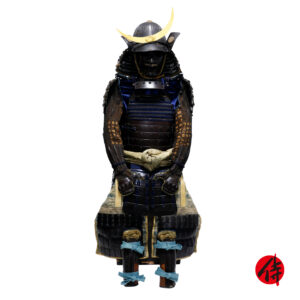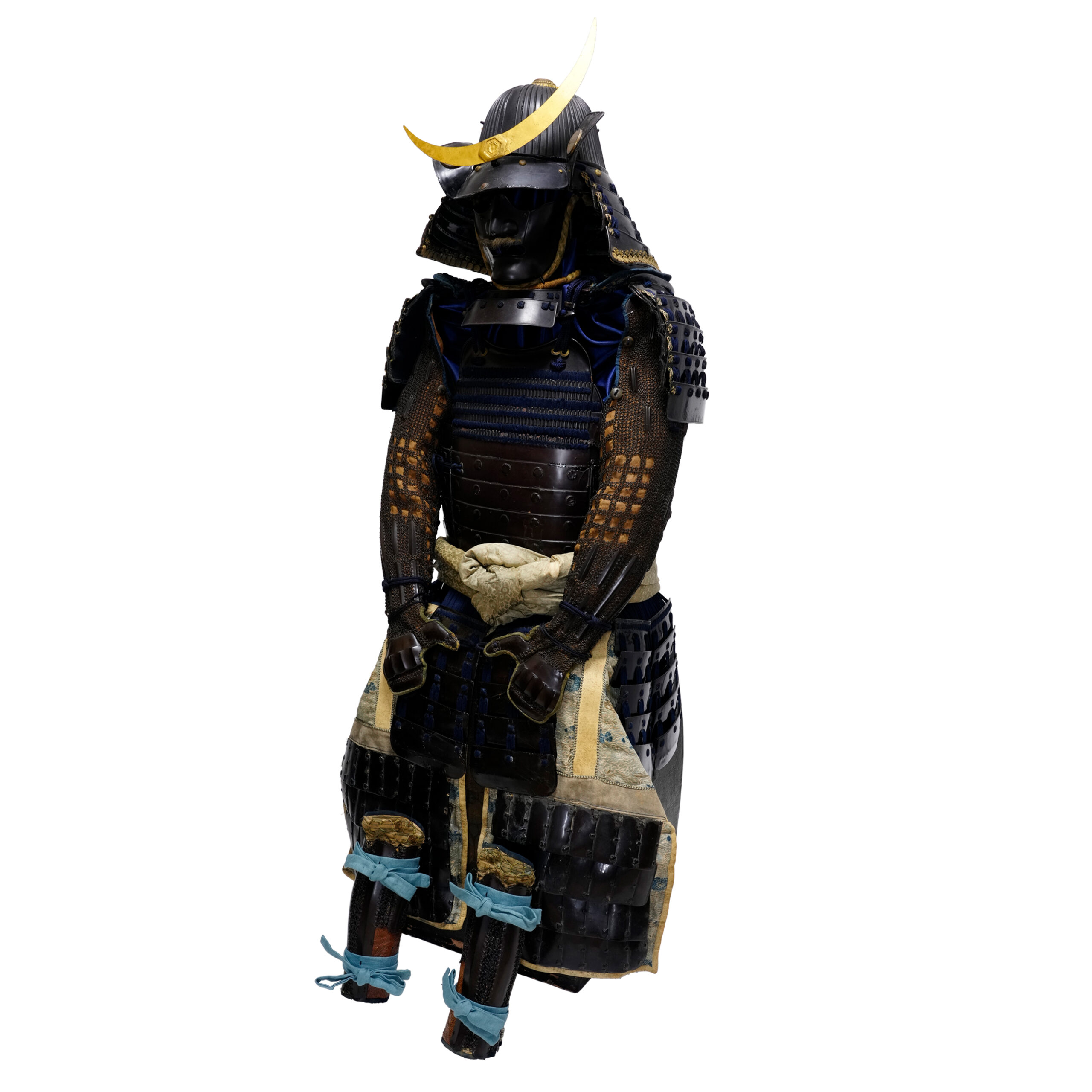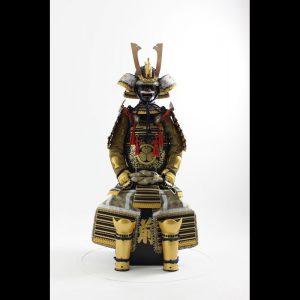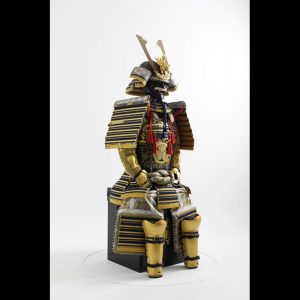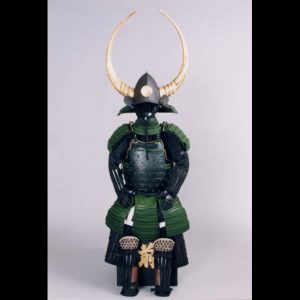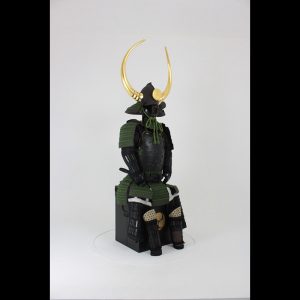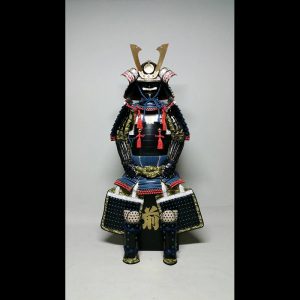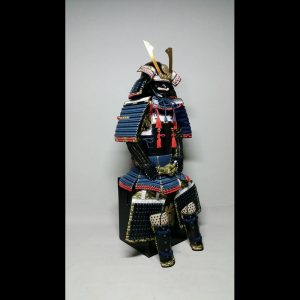Antique Mid Edo Period Samurai Armor Tokubetsu Kicho Shiryo Certificate (A-33)
Period: the middle of the Edo Period
appraised by The Association for the Research and Preservation of Japanese Helmets and Armor
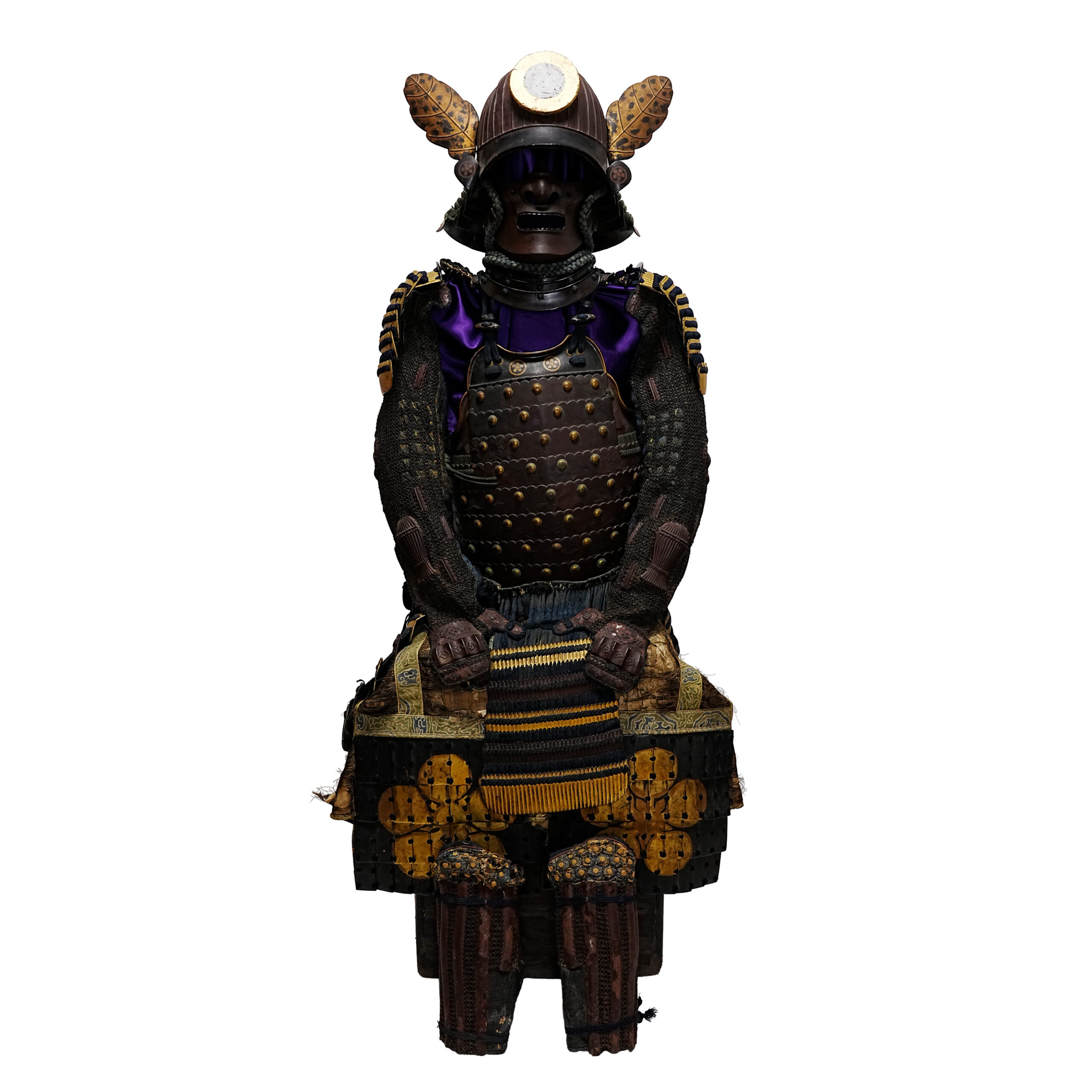
Kabuto (helmet)
■Helmet bowl: Suji Kabuto
The Kabuto (兜, helmet) is a protector for the head. When people started using the Kabuto, it was initially designed for practical use. However, the principal purpose of its design has changed with time; Samurai warriors tried to express their dignity, personality, or religion by wearing the characteristic designed Kabutos. According to a theory, these uniquely designed Kabutos were made from the late Muromachi (室町後期, 1467-1573) to the Edo period (江戸, 1603-1868). This type of Kabuto is categorized as the Kawari Kabuto (変わり兜), and a variety of materials were used to create them. For example, animal fur, seashells, plants, and paper were used as materials for decoration.
Here, we would like to introduce more about the history of Kabutos. Before the Kawari Kabuto’s production, the Suji Kabuto (筋兜) appeared during the Nanbokuchou (南北朝, 1337-1392) period. At that time, the tactic was gradually changed from the piggyback fight style to battle with the Tachi (太刀) sword and the Naginata (薙刀, Japanese halberd) on the ground. Therefore, there was a rise in demand for the weight-saving of the Kabuto. Also, in order to turn the attack by swords, a new type of structure was invented: the Suji Kabuto (筋兜). Its form slides swords’ attacks when weapons hit the Kabuto. It is said that the production of the Suji Kabuto prospered in the Muromachi (室町, 1336-1573) period. We estimate this Kabuto is one of these Suji Kabutos made in that tendency in the Edo period. It has 34 stripes in this Kabuto, meaning 34 small iron plates are connected. It is called Sanju Yon Ken Suji Kabuto (三十四間筋兜). Sanju Yon means 34 in Japanese.
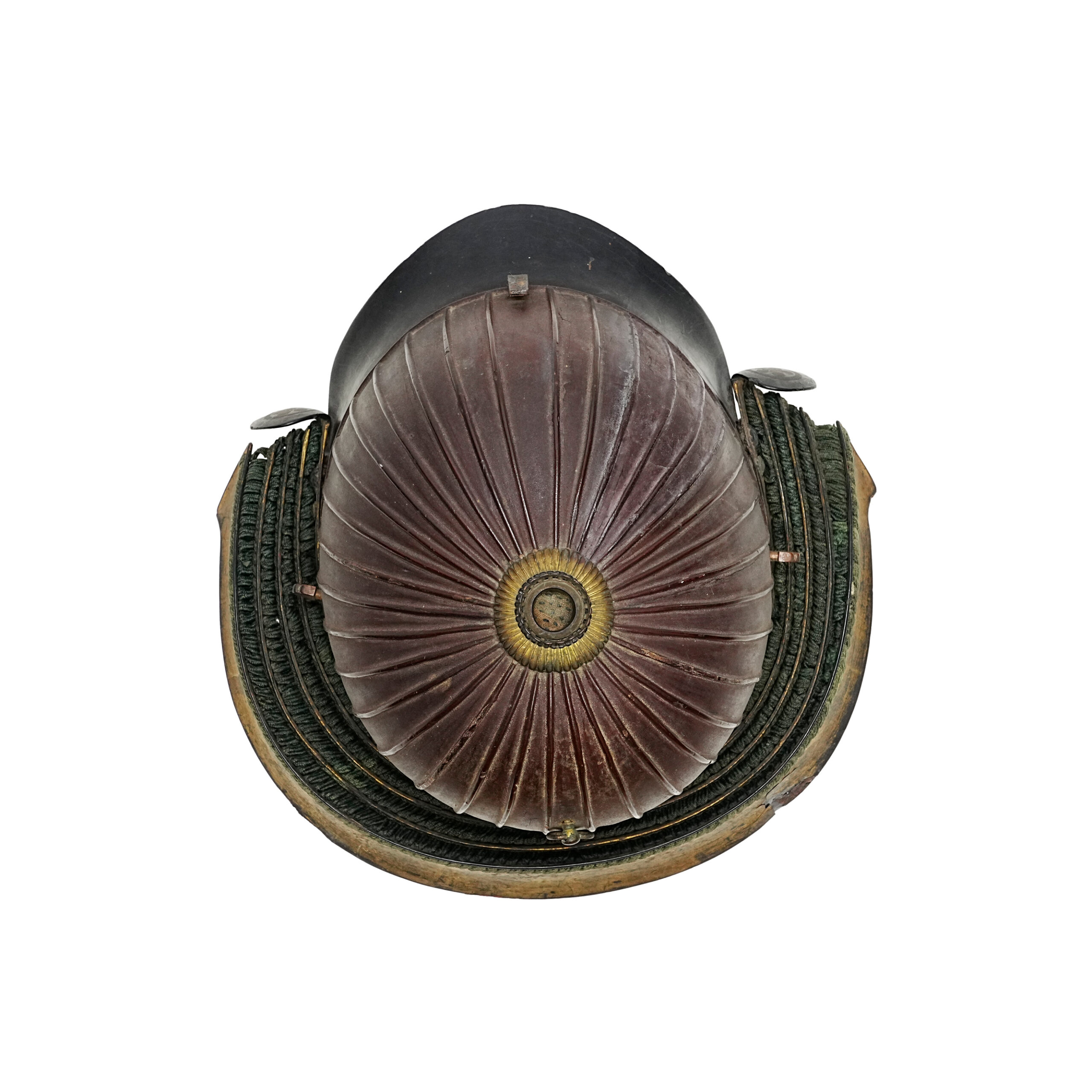

■Shikoro (side neck guard):
Iron plates laced with green threads.
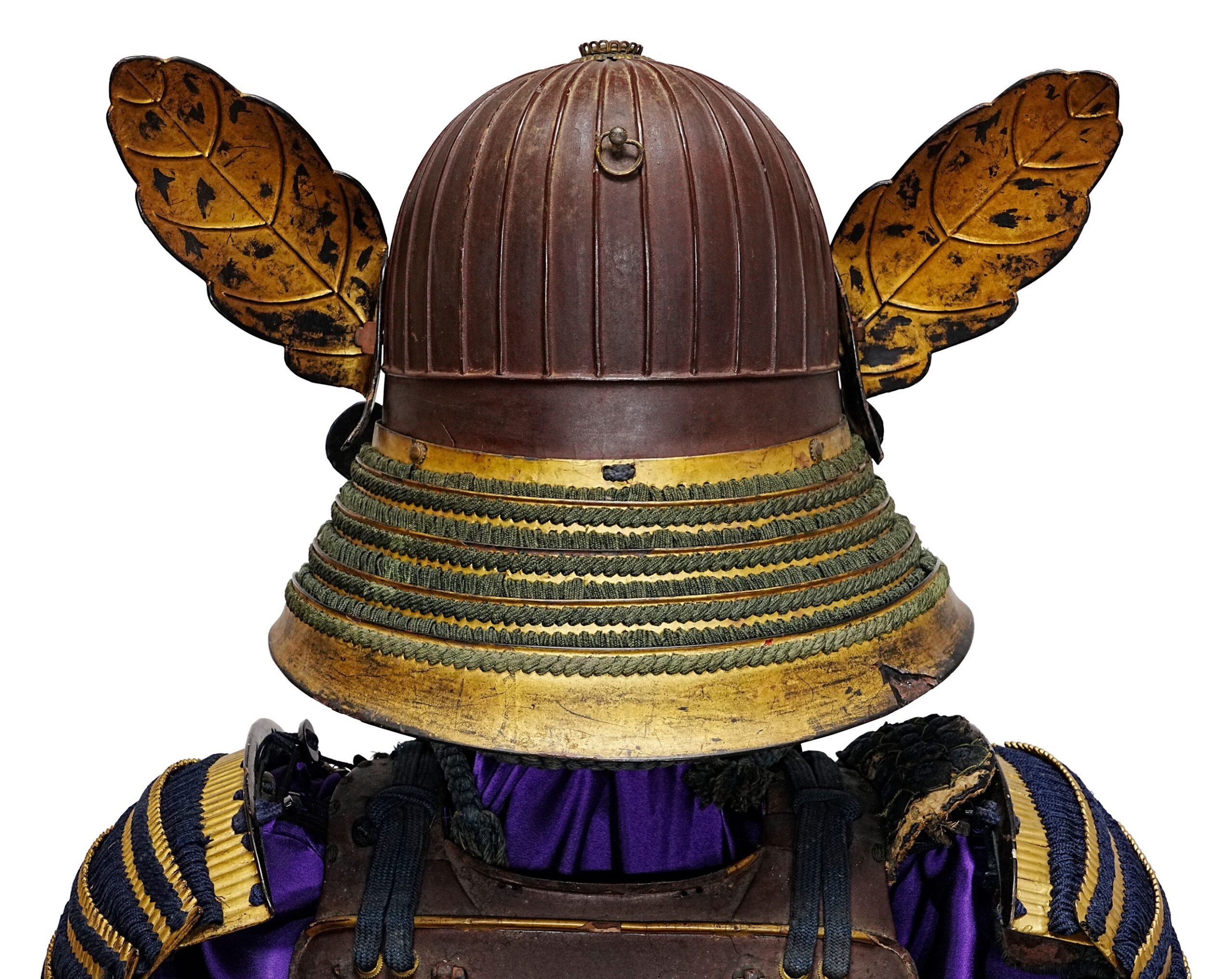
■Fukikaeshi (side neck guard):
The Fukikaeshi (吹き返し) is both ends of a Kabuto. It protects a face from swords and also shows its beautiful workmanship. Family crests are sometimes designed on this part, as seen on this Kabuto’s Fukikaeshi. You could see a golden mark is designed on each Fukikaeshi. This family crest is a type of the Maru-ni Umebachi Mon (丸に梅鉢紋), which is derived from the Ume (梅, Japanese apricot blossom) pattern.
The Ume pattern profoundly relates to the Tenjin (天神) faith. This belief honors the soul of Sugawara no Michizane (菅原道真, 845-903), and he cherished this flower. Michizane excelled in academics and was appointed and promoted by the emperor back then. However, other aristocrats envied his promotions, and Michizane was demoted Kyushu (九州) region, far from the capital. And he passed away two years later. After his death, the capital suffered great natural disasters. And people who opposed Michizane had unfortunate experiences. People thought that his spirit caused these things, and the capital was terrified at that time. One day, when such a situation continued, Michizane possessed a person and demanded to enshrine himself. The imperial court accepted his request and built a shrine in Kyushu to appease his spirit. This was managed by the Sugawara family, a family of scholars. And Michizane, who excelled in studies during his lifetime, came to be worshiped as the god of learning. Because of this background, it is said that many family crests with the Ume designs were used in the Kinki and Kita-Kyushu regions.
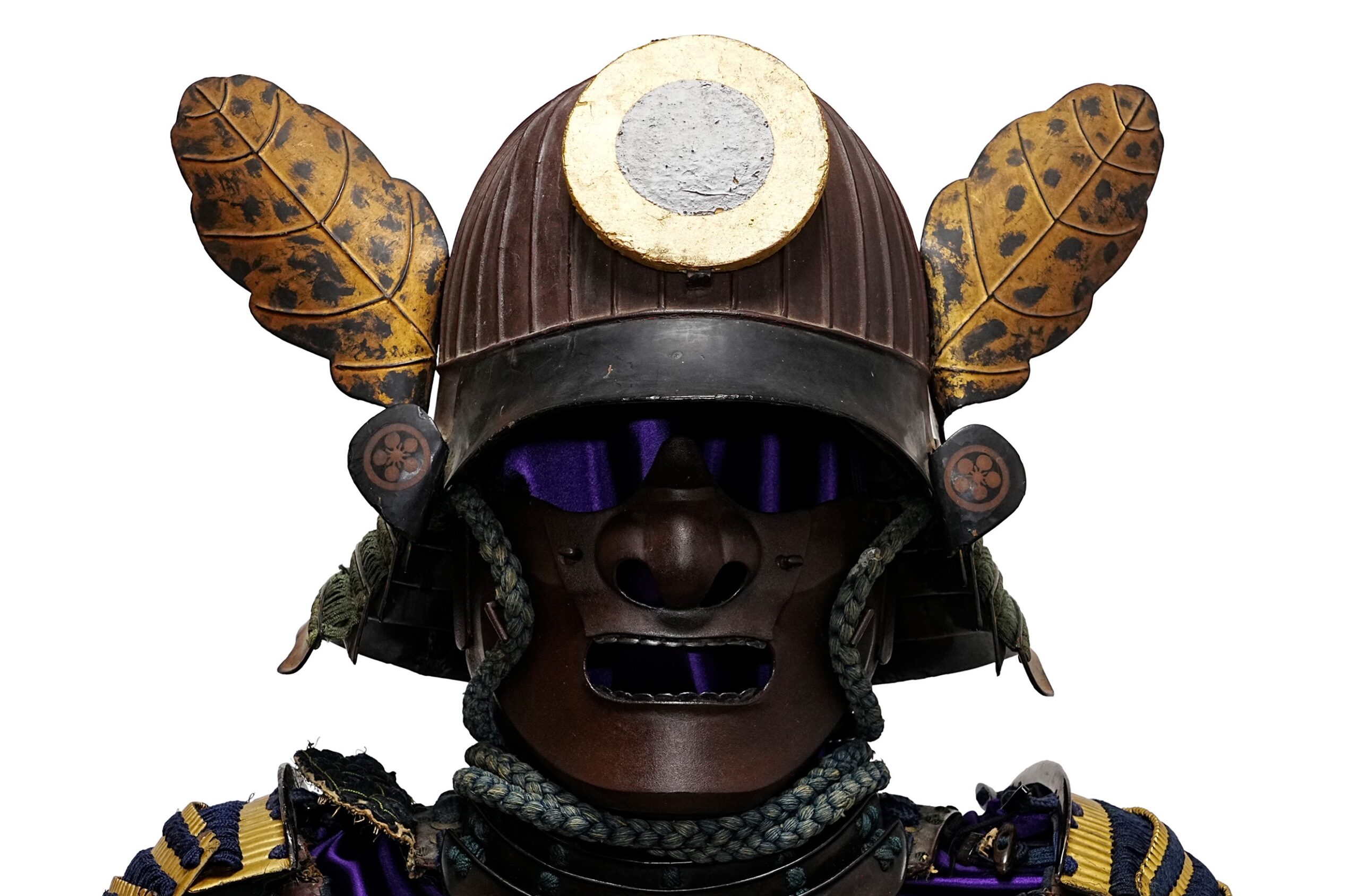
■Menpo (face guard): Ressei Menpo
This type of Menpo is called the Ressei Menpo (烈勢面頬). It represents the angry face to intimidate enemies. There are many types of Menpo, depending on their shape or appearance. The purpose of Menpo was not only to protect Samurai’s face. But also to hide their true faces so that their psychological states were unaffected. Short beards are attached to this Menpo. Thanks to this effect, even a young soldier would have been able to produce the majestic appearance of a middle-aged Samurai.
■ Maedate (Front decoration): Nichirin
The Maedatemono (前立物, front decoration) is attached to this Kabuto. We estimate the motif of this Maetate is a Nichirin (日輪, another name for the sun) or a Getsurin/Gatsurin (月輪, another name for the moon). There was a widespread belief among Samurai, the Myouken (妙見) belief. This religion was born in India. It was mixed with the Polestar belief and was brought to Japan from the continent. The sun, the moon, and the stars of the entire universe were the symbols of faith. The Myouken Bosatsu (妙見菩薩, 菩薩 means Bodhisattva) fulfills all wishes such as fertility of rich harvest, peace, the prosperity of the clan, healing of illness, longevity, success in business, traffic safety, academic achievement, marriage, etcetera. So, it is understandable that Samurai warriors cherished sun and moon motifs. The former owner of this armor might have shown his faith by wearing this Kabuto.


Armor
■Dō (cuirass): Nimai Dō
The Nimai Dō (二枚胴) is a kind of cuirass for Tousei Gusoku (当世具足, developed armor style). Nimai Dō was named after the fact that Nimai (二枚) means two plates, and Dō (胴) means torso in Japanese. Instead of using many small lamellar plates called Kozane (小札), this cuirass used large iron plates riveted.
■Kusazuri (skirt of plates attached to the cuirass):
Lacquered iron Kusazuri laced with navy blue threads. As the pictures below show, some cords for the Odoshi (縅, a technique for armor tying boards together with cords such as leather or thread) have torn due to aging. Especially, the thread on the back are damaged and to stay put on the body armor, we temporarily used colored tapes on several threads.
If you like to see the damaged threads before the tapes are applied, please feel free to contact us.
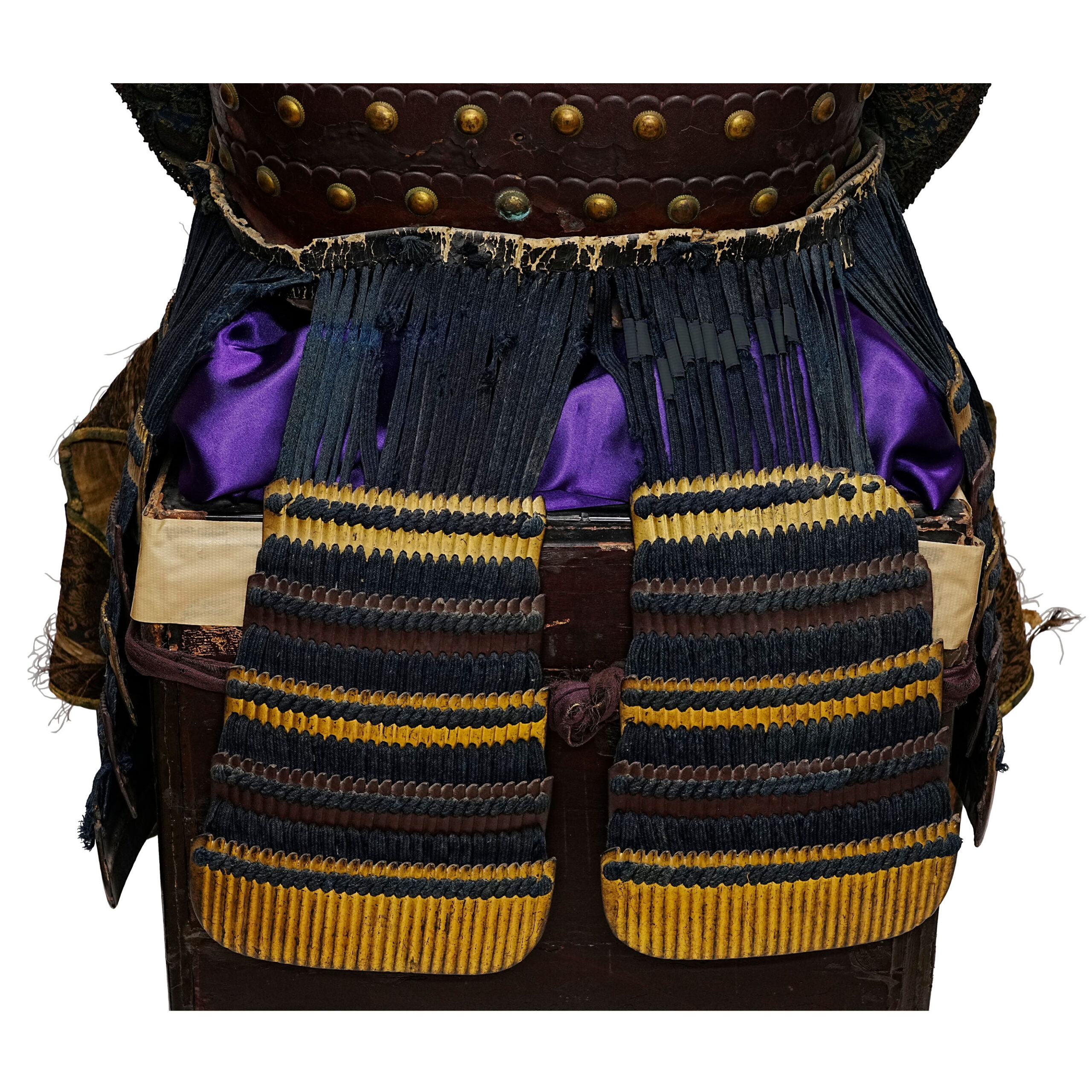

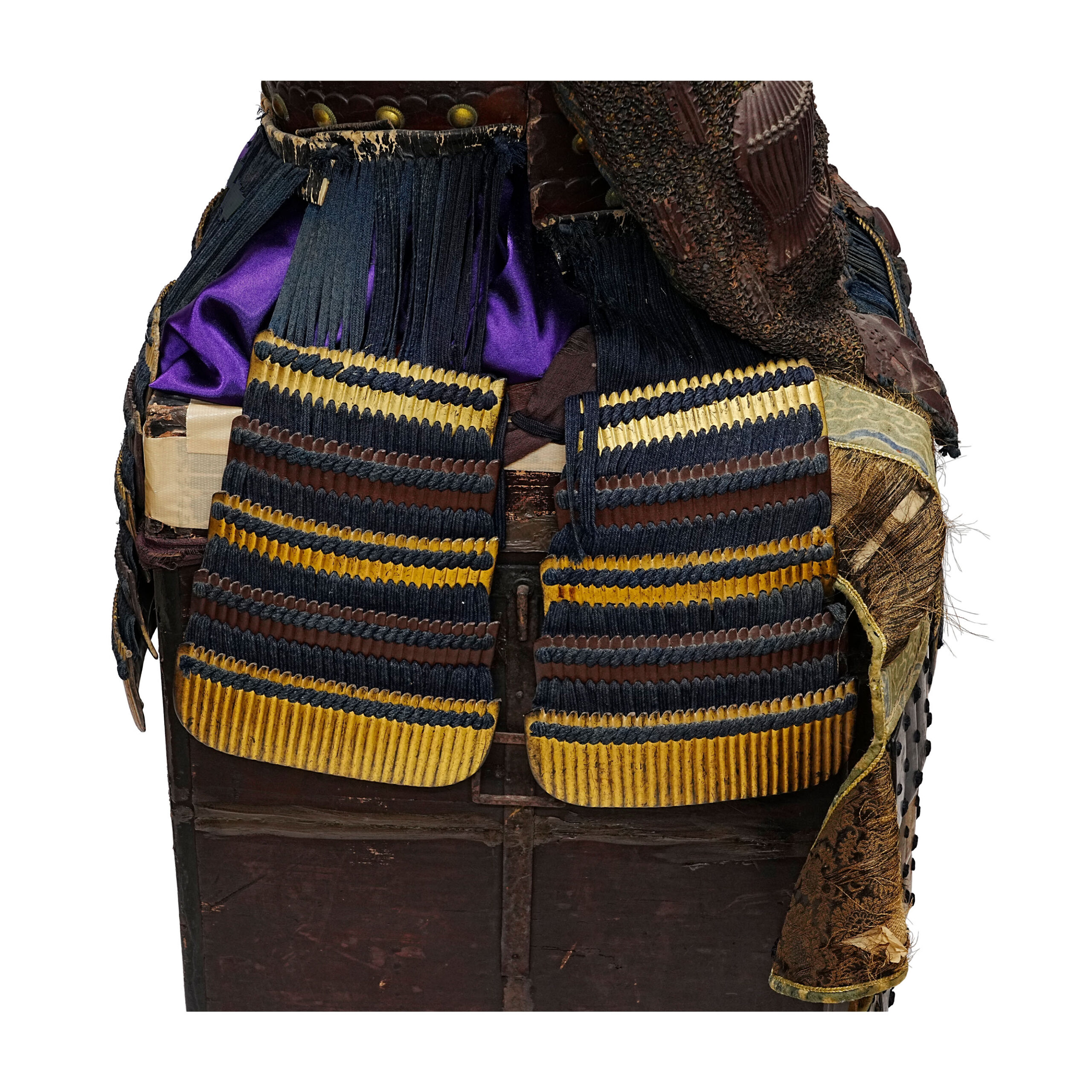
Small parts
■Kote (armored sleeves):
Intricate iron chain mail with silk.
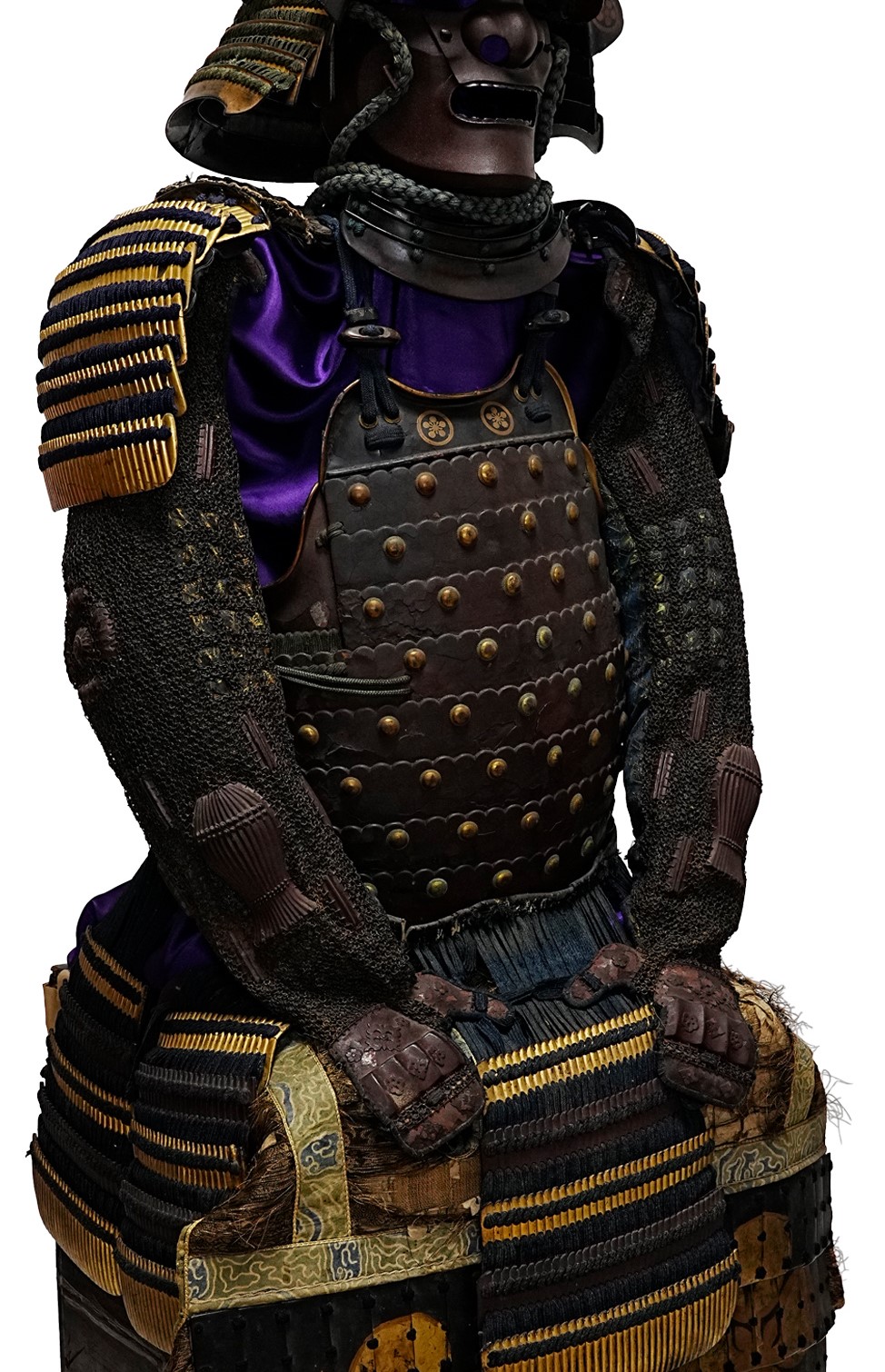
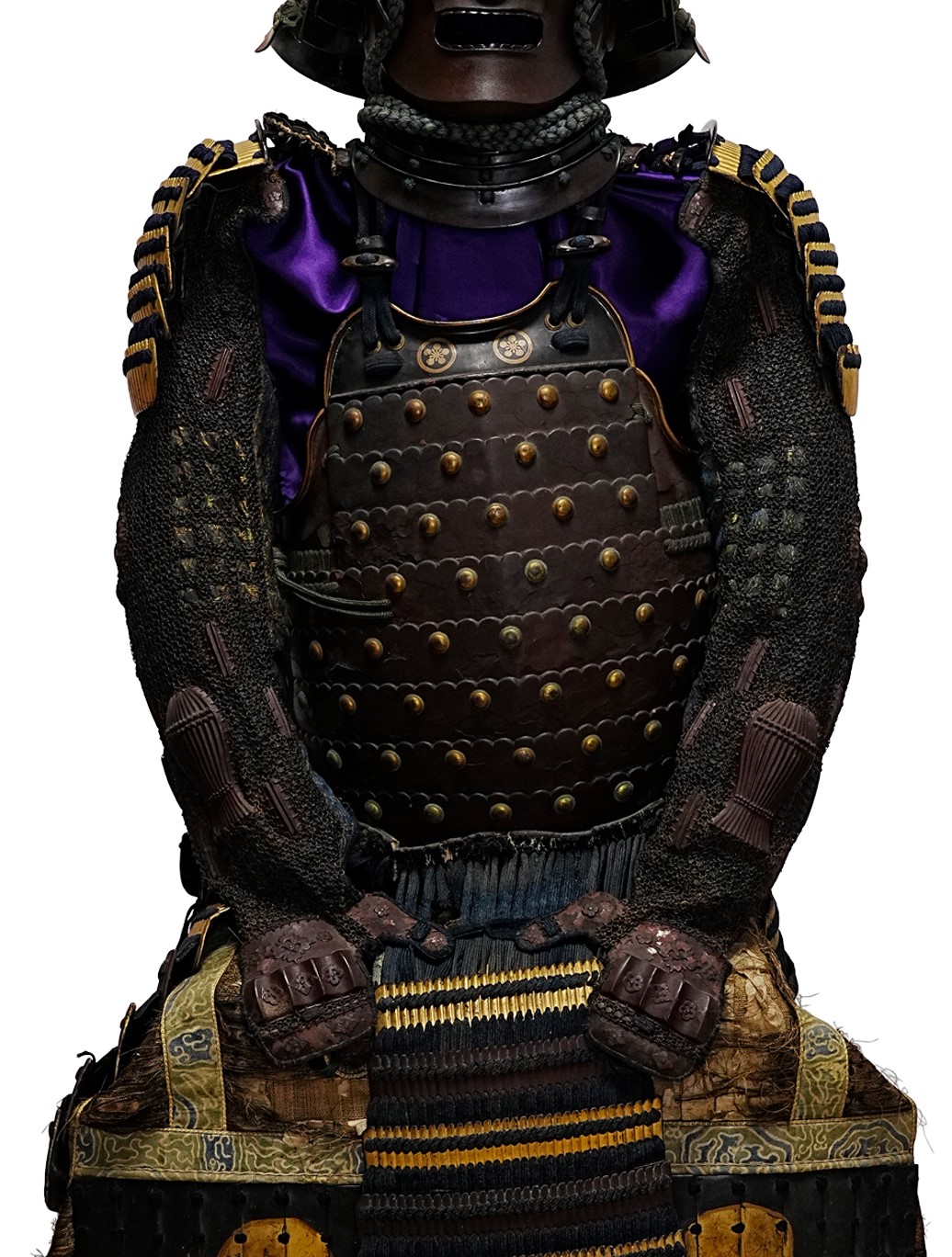
■Haidate (thigh protection):
The Haidate (佩楯) is a thigh guard. Iron plates are attached to its cloth, and the Umebachi Mon is depicted on this Haidate, the family crest we mentioned in the description of the Fukikaeshi.
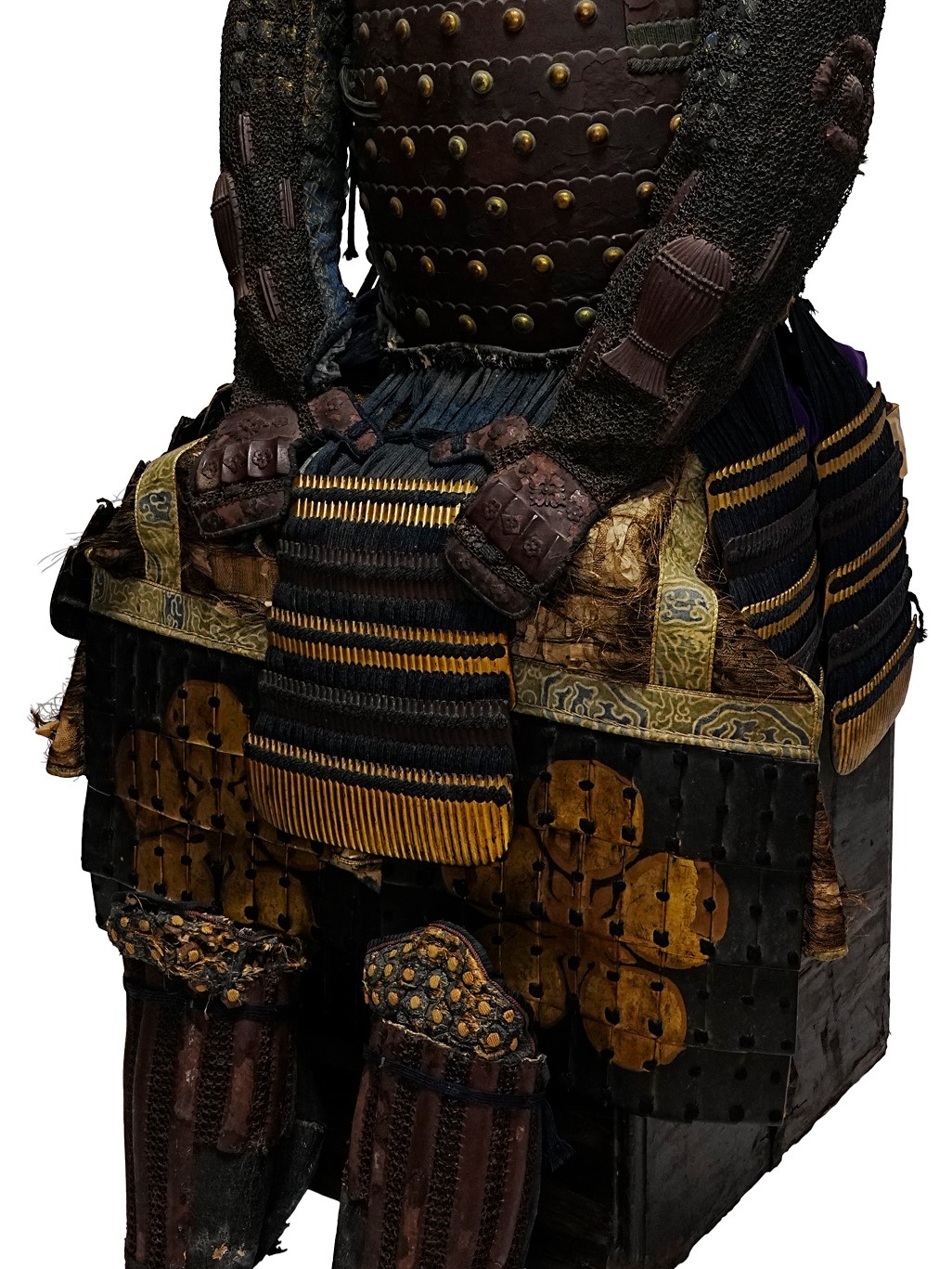
■Suneate (shin guard):
The Kikkou (亀甲, turtle’s shell) pattern is used for the cloth of the Suneate (脛当). It is a continuous geometric pattern connecting regular hexagons up and down. A theory says that this design was brought from China and the Korean Peninsula during the Asuka (飛鳥, 592-710) and Nara (奈良, 710-794) periods. A proverb says turtles live long lives; therefore, turtle and turtle shell patterns represent longevity. In addition, as this continuous hexagonal pattern does not get out of its shape, it is said people wished for eternal prosperity by using this design.

■Gattari (Sashimono holder):
If you focus on the back of this armor, you will find a square-shaped metal frame attached. It is a gear called the Gattari (合当理) that supports the upper part of the Sashimono (指物, a frag or decorative sign installed at the back of armor). And the Uketsutsu (受筒)/ Sashidutsu (指筒) is a tube to store a Sashimono. Samurai warriors judged their sides and enemies on the battlefields by checking the motifs designed for flags. Especially in group battles with infantry, this method was very effective because they could instantly identify affiliations.

Certification: Tokubetsu Kicho Shiryo Certificate (No. 2036)
On August 27th 2023, this armor was appraised as a Tokubetsu Kicho Shiryo by The Association for the Research and Preservation of Japanese Helmets and Armor, which is the most trusted Japanese armor appraiser in Japan. This association is also known as Nihon Katchu Bugu Kenkyu Hozonkai (日本甲冑武具研究保存会). Tokubestu Kicho Shiryo (特別貴重資料) means special rare article. It is ranked as the third highest of five rankings.
The paper mentions the armor was made in the middle of the Edo period (mid 17th- mid 18th century). You can receive this original authentication paper.

An English translation of the certificate is available on request. We won’t charge any additional fee.
【About us】
Samurai Museum is located in Tokyo, Japan, exhibiting antique artifacts related to the Samurai history. Samurai Museum Shop is the place for those who are interested in Japanese culture and craftsmanship. We deal with antique Samurai swords/armor, traditional crafts made in Japan and so on.
【Antique Japanese Armor and Export process】
After receiving the full payment from you, we will apply for its export permit from the agency for Cultural Affairs to legally export the antique Samurai armor to other countries. It normally takes around 2-4 weeks to receive this permit. And we would like you to expect at least 1-1.5 months for your order to arrive at your given address after you ordered.
【Payment method】
We accept payment through Stripe (Credit card), PayPal, Apple Pay or ChromePay, all of which are secure payment methods. Also, you don’t need to make an account on Stripe for the checkout. If you prefer other payment method, please contact us. You may either pay in JPY, USD, AUD, CAD, EUR, CHF or GBP. The price is set in Japanese Yen. Prices in other currencies are automatically calculated based on the latest exchange rate.

【Shipping duration】
We normally ship via EMS (Express Mail Service) provided by Japan Post. It usually takes at least 5-14 days to deliver the package after you place an order. We offer Free International Shipping as long as we can ship your order by EMS. If you prefer other shipping carriers, please contact us.
We will inform you of the order’s tracking number via email. Please make sure you fill out your valid email address correctly.
*Please keep in mind that due to the spread of COVID-19, there might be possible delays in delivery. If you like to make sure if EMS shipping is available to your country, please contact us.

【How to make sure the condition】
Please keep in mind that what you are going to purchase is an antique item. We uploaded high resolution photos for you to check its condition thoroughly. If you like to see more photos with different angles, please feel free to contact us. We will be happy to send them to you so that you can make informed decision. It is essential for us to know that you are happy with your choice of a sword. and we are prepared to use the best of our ability to serve you.
【How To Contact Us】
Please contact us through email, Facebook Messenger or Live Chat if you have any questions. You can find each icon on the right side of the website. Please click one of them to reach us. We will reply to you within 1-2 business days.
【How To Preserve Antique Samurai Armor】
Dryness, humidity, and bad ventilation might deteriorate the condition of antique Samurai armor. The best temperature to preserve Samurai armor is around 20℃ in Celsius, and humidity should be about 60%. Direct sunlight should be avoided. We recommend storing armors in a room with good ventilation. If you like to display them outside the boxes for a prolonged time, we suggest using a glass case in order for dust not to be accumulated easily. In case you don’t use a glass case, please make sure to regularly dust off from the armor by using a soft brush made of delicate cloth or brush for painting.
If you like to know more about the preservation of this armor, please feel free to contact us.

